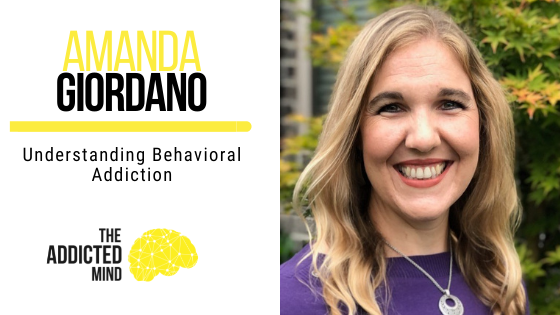There are a lot of negative consequences that can come from behavioral addictions. They include everything from financial problems to legal repercussions to health issues. Whether it’s gambling, gaming, sex, or pornography, it’s important to understand why some people are susceptible to certain behaviors. In fact, the same mechanism that influences chemical addiction could be responsible for behavioral addiction as well.
On this episode, Duane speaks with Amanda Giordano, a licensed professional counselor and associate professor at the University of Georgia, who specializes in addiction counseling both in chemical addiction and behavioral addiction. Amanda is the author of a clinical reference book titled A Clinical Guide to Treating Behavioral Addictions.
Today, she imparts her expertise in this field, explaining how the changes in the brain associated with behavioral addictions are actually very similar to the changes associated with chemical addictions.
In other words, instead of becoming addicted to a chemical that originates outside of the body, the body is addicted to the release of its own neurochemicals (dopamine in particular). Once the brain’s reward system is activated, it releases neurotransmitters which can become very difficult for some people to abstain from as they become their primary means of regulating their emotions.
Hence, for some susceptible individuals, a rewarding behavior can become an addiction where there’s a loss of control over that behavior. The behavior is continued despite negative consequences and it becomes compulsive for that individual. They experience cravings or a mental preoccupation with the behavior when they’re not engaging in it.
When we understand the neuroscience behind it, we can have a lot more empathy for people with addiction because we can now understand that their experience might be very different from the experience of someone who is not genetically predisposed to addiction.
Amanda also talks about how to distinguish behavioral addiction from just a high involvement in the behavior by looking for the 4 C’s of addiction.
In this episode, you will hear:
- How a rewarding behavior can become an addiction
- Different types of behavioral addiction
- Resetting the brain takes time
- The 4 C’s of addiction
- The behavior becoming the salient part of their life
- Proven effective methods of treatment
- Factors that influence the susceptibility to behavioral addiction
- Positive reinforcement vs. negative reinforcement
- The three circles technique to identify the warning signs
Key Quotes:
[04:24] – “There are changes in the brain associated with behavioral addictions that are very similar to changes associated with chemical addictions.”
[04:47] – “For some susceptible individuals, a rewarding behavior can become an addiction as well.”
[06:37] – “Instead of becoming addicted to a chemical that originates outside of the body, we’re really becoming addicted to the release of our own neurochemicals.”
[09:29] – “The brain can reset, but it takes time… It takes a little bit of time for the brain to reset and to again, start functioning the way it did prior to the start of the addiction.”
[14:42] – “There are a lot of negative consequences that can come from behavioral addictions, everything from finances to legal repercussions to health issues.”
[17:25] – “The chronic elevation of dopamine tricks the brain into thinking this must be a really important activity and must be necessary for my survival.”
[30:26] – “If we can find alternative, healthier, more adaptive ways to regulate our emotions, then we might not need to turn to some of these problematic behaviors.”
[42:13] – “Isolation, shame, and secrecy are some of the weapons that addiction uses to keep us silent and keep us sick.”
Subscribe and Review
Have you subscribed to our podcast? We’d love for you to subscribe if you haven’t yet.
We’d love it even more if you could drop a review or 5-star rating over on Apple Podcasts. Simply select “Ratings and Reviews” and “Write a Review” then a quick line with your favorite part of the episode. It only takes a second and it helps spread the word about the podcast.
If you really enjoyed this episode, we’ve created a PDF that has all of the key information for you from the episode. Just fill in your information below to download it.
Supporting Resources:
Email: amanda.giordano@uga.edu
Amanda’s blog: https://www.psychologytoday.com/intl/contributors/amanda-l-giordano-phd-lpc
A Clinical Guide to Treating Behavioral Addictions:
https://www.amazon.com/Clinical-Guide-Treating-Behavioral-Addictions/dp/0826163165
Diagnostic and Statistical Manual of Mental Disorders (DSM-5):
https://www.amazon.com/Diagnostic-Statistical-Manual-Mental-Disorders/dp/0890425558
Irresistible by Adam Alter:
https://www.amazon.com/Irresistible-Addictive-Technology-Business-Keeping/dp/1594206643

